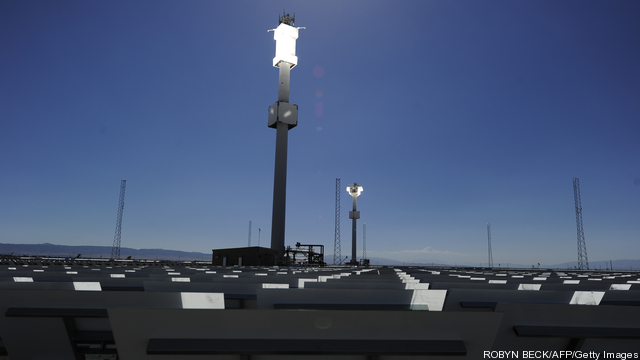
While solar critics decry the intermittent nature of photovoltaic technology that can capture the sun’s light and turn it into electricity only when its sunny, developers have been busy finding ways to store the sun’s power even overnight.
By using molten salts in its water tower, California-based solar company, BrightSource Energy, has developed a method to store overnight energy collected during the day by its concentrated solar power (CSP) plants. In late November, the company announced that it will be including its SolarPLUS thermal energy storage technology to several of its CSP plants.
As developers continue to innovate with intermittent renewable power sources, energy storage has become an increasingly important piece of the solar business. On December 14, Senators Jeff Bingaman (D-NM) and Ron Wyden (D-OR), the two ranking Democrats on the Energy and Natural Resources Committee, told an Energy Storage Association forum they are sponsoring a bill, S.1845, with Maine Republican Senator Susan Collins, for a storage investment tax credit (ITC) that would be similar to credits now available for solar installations.
The tax credit would encourage energy storage development, particularly large-scale storage, which has been a holy grail of sorts for the energy industry.
This interactive AOL Energy graphic shows the way excess power currently spills out of the grid and is wasted when unused. It also shows that when an energy storage is clicked “on” power can be stored overnight rather than being wasted, while at the same time thermal power plants can also be scaled back due to the extra power coming from solar. Move your mouse from left to right to see what happens from day to night.
Photo Caption: (TOP) A general view of the eSolar Sierra SunTower power plant in Lancaster, California in the Mojave Desert approximately 70 miles (110 km) north of Los Angeles May 12, 2011. eSolar’s concentrated solar power (CSP) system use 24,000 mirrors called ‘heliostats’ to reflect solar heat to a thermal receiver mounted atop two towers. Electrical power is produced when the focused heat boils water within the thermal receiver and produces steam, which is then piped to a nearby reconditioned 1947 GE turbine generator to produce electricity.
